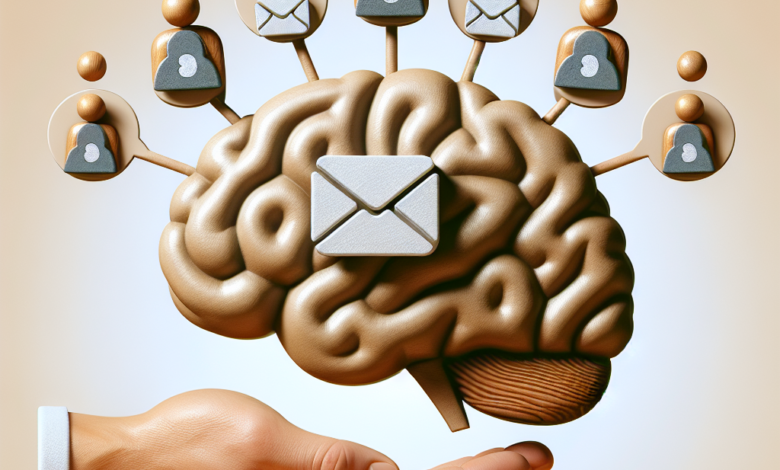The Influence of Cognitive Biases on Email Interaction

Exploring the Power of Cognitive Biases in Email Marketing
If you’ve been following my columns here on MarTech, you’ve likely picked up tips on how to enhance the persuasiveness and engagement of your email content. One key tool in achieving this is leveraging cognitive biases in both your copywriting and message design. Cognitive biases are essentially mental shortcuts that people subconsciously use to process information quickly and efficiently. Understanding and utilizing these biases can significantly impact how your subscribers engage with your emails.
In previous articles, I’ve delved into popular cognitive biases like loss aversion and social proof. While there are a whopping 188 identified cognitive biases, not all are applicable to marketing. However, some lesser-known biases can be just as impactful in shaping subscriber engagement with your emails.
In this column, I’ll share several cognitive biases that have proven effective in my own email marketing efforts and explain how you can ethically incorporate them into your campaigns. I’ll also walk you through a B2B email example where I combined multiple biases to appeal to different types of buyers, yielding impressive results.
Why should we appeal to cognitive biases in email copy and design?
People crave information that is easy to process and understand. With email readers spending an average of 8.97 seconds reading an email, it’s crucial to make your message clear and engaging. Shorter sentences, bullet points, and strategic design elements can help capture attention and drive action.
Testing different cognitive biases can help you determine which ones resonate best with your audience segments, leading to higher engagement and conversions. However, it’s important to use these biases ethically, avoiding manipulative tactics and focusing on adding genuine value to your subscribers.
Caveat: Use cognitive bias ethically
When leveraging cognitive biases in your email marketing, it’s essential to align them with your audience’s genuine needs, avoid manipulative tactics, and prioritize adding value to enhance engagement. Building trust with your subscribers should always be the primary goal, so steer clear of anything that could compromise that trust.
4 common cognitive biases that influence email engagement
1. Curiosity
Captivate your audience’s curiosity by posing intriguing questions in your subject lines and content. Ensure that the content delivers on the curiosity sparked to maintain engagement and trust.
2. Anchoring effect
Use the anchoring effect by highlighting original prices to emphasize discounts or special offers effectively. However, ensure transparency and avoid misleading pricing tactics.
3. Loss aversion
Trigger the fear of missing out by creating urgency in your messaging. Strike a balance between urgency and authenticity to drive action without sacrificing trust.
4. Social proof
Utilize social proof by showcasing testimonials and user statistics to build credibility and trust with your audience. Authenticity is key to leveraging social proof effectively.
5 cognitive biases to explore for increasing email engagement
1. Von Restorff effect (isolation effect)
Stand out by highlighting specific elements in your email content to enhance memorability and engagement. Use bold text or color to draw attention to key offers and information.
2. Zeigarnik effect
Tap into the Zeigarnik effect by focusing on incomplete tasks or actions to drive engagement. Clearly outline next steps for your audience to encourage them to take action.
3. IKEA effect
Engage your audience by involving them in the creation process, fostering a sense of ownership and value. Encourage participation through interactive elements in your emails.
4. Baader-Meinhof phenomenon (frequency illusion)
Repetition can enhance message retention and engagement. Consistently reinforce key benefits or messages across multiple emails to increase visibility and impact.
5. Endowment effect
Highlight the value of existing benefits or features to enhance perceived value and engagement. Personalize offers based on what your audience already possesses or values.
Optimizing email copy with cognitive bias: A quickstart guide
Implement these strategies to leverage cognitive biases effectively in your email marketing:
- Use curiosity in subject lines to drive engagement.
- Apply the Zeigarnik effect in ongoing engagement sequences.
- Utilize the Von Restorff effect to highlight key offers.
- Emphasize value with the Endowment effect.
- Strategically test multiple biases within a comprehensive testing framework.
Quick case study: Boosting engagement with cognitive biases
In a recent campaign, I tailored email content to appeal to different buyer modalities and incorporated various cognitive biases to enhance engagement. By aligning the content with the specific needs and preferences of each buyer type, I achieved significant results.
Here’s how I structured the email around the buyer modalities and cognitive biases:
Competitive (goal-oriented)
- What resonates: Direct focus on results and optimization.
Spontaneous (in the moment)
- What resonates: Quick wins and emotional appeals.
Humanistic (story- and relationship-driven)
- What resonates: Trust-building testimonials and success stories.
Methodical (detail- and process-oriented)
- What resonates: Data-driven and methodical approach.
By incorporating cognitive biases like authority, social proof, loss aversion, clarity, curiosity, and certainty, I was able to create a compelling email that resonated with each buyer type and drove engagement.
Bringing it all together
Understanding and leveraging cognitive biases in your email marketing can significantly impact engagement and conversions. By crafting emails that appeal to these biases ethically and strategically, you can create more compelling and effective campaigns. Remember to prioritize building trust and adding genuine value to maintain long-term relationships with your subscribers.
FAQs
1. How can I ensure I’m using cognitive biases ethically in my email marketing?
To use cognitive biases ethically, align them with genuine audience needs, avoid manipulative tactics, and focus on adding value to your subscribers. Transparency and authenticity are key to building trust.
2. Which cognitive biases are most commonly used in email marketing?
Curiosity, anchoring effect, loss aversion, and social proof are commonly used cognitive biases in email marketing to drive engagement and conversions.
3. How can I test the effectiveness of different cognitive biases with my audience?
Conduct A/B testing with different cognitive biases incorporated into your email content to gauge their impact on engagement and conversion rates. Analyze the results to determine which biases resonate best with your audience.
4. Are there cognitive biases that are particularly effective in abandoned cart email reminders?
The Zeigarnik effect and endowment effect can be particularly effective in abandoned cart email reminders by tapping into incomplete tasks and highlighting existing benefits to drive action.
5. How can I optimize my email copy using cognitive biases?
Optimize your email copy by strategically incorporating cognitive biases like curiosity, anchoring effect, and social proof to captivate your audience’s attention and drive them towards action. Test different biases to determine the most effective strategies for your audience.
For more in-depth insights on leveraging cognitive biases in email marketing, check out the recommended resources below.
Contributing authors are invited to create content for MarTech and are chosen for their expertise and contribution to the martech community. Our contributors work under the oversight of the editorial staff and contributions are checked for quality and relevance to our readers. The opinions they express are their own.




